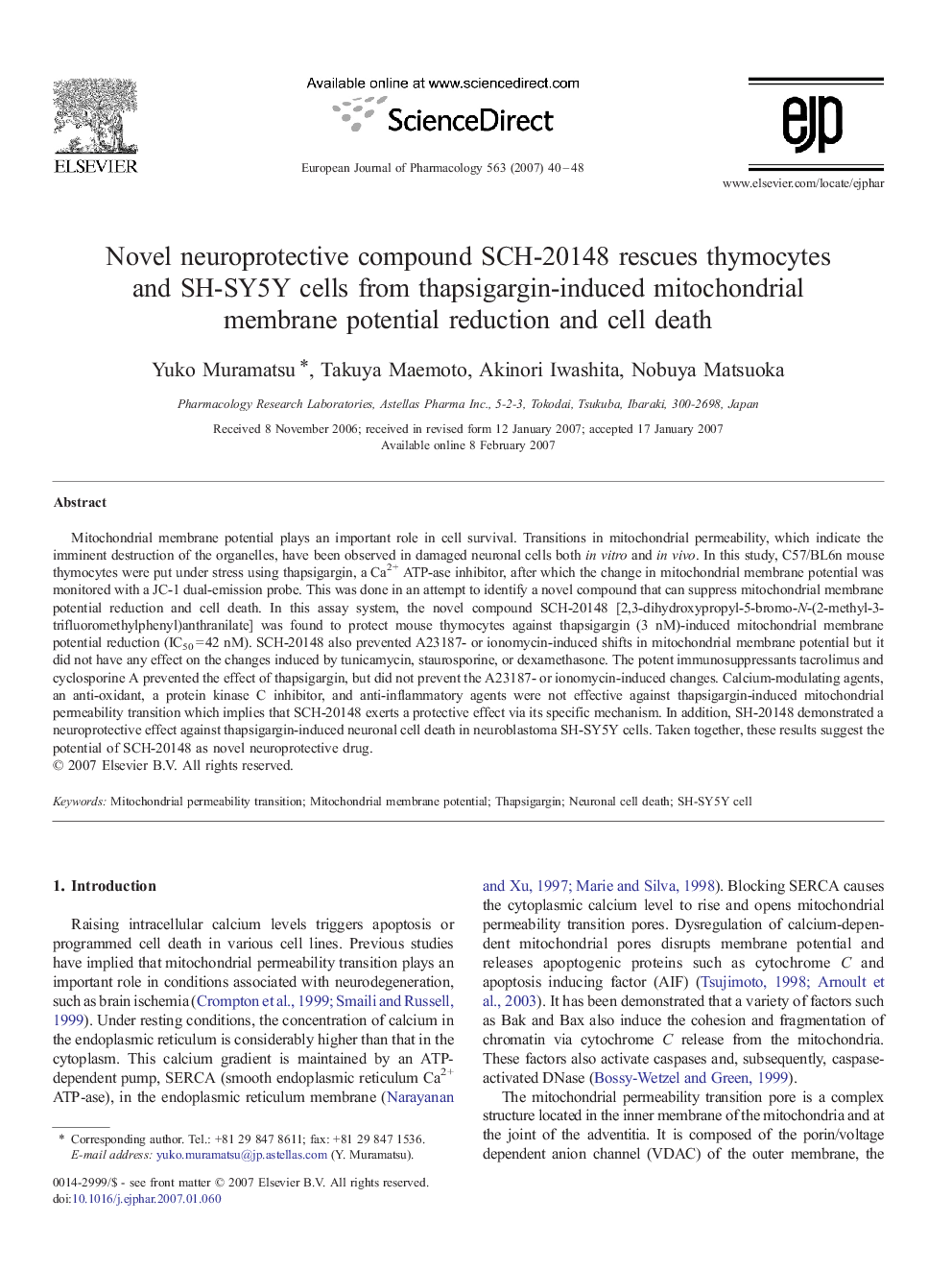| Article ID | Journal | Published Year | Pages | File Type |
|---|---|---|---|---|
| 2536322 | European Journal of Pharmacology | 2007 | 9 Pages |
Mitochondrial membrane potential plays an important role in cell survival. Transitions in mitochondrial permeability, which indicate the imminent destruction of the organelles, have been observed in damaged neuronal cells both in vitro and in vivo. In this study, C57/BL6n mouse thymocytes were put under stress using thapsigargin, a Ca2+ ATP-ase inhibitor, after which the change in mitochondrial membrane potential was monitored with a JC-1 dual-emission probe. This was done in an attempt to identify a novel compound that can suppress mitochondrial membrane potential reduction and cell death. In this assay system, the novel compound SCH-20148 [2,3-dihydroxypropyl-5-bromo-N-(2-methyl-3-trifluoromethylphenyl)anthranilate] was found to protect mouse thymocytes against thapsigargin (3 nM)-induced mitochondrial membrane potential reduction (IC50 = 42 nM). SCH-20148 also prevented A23187- or ionomycin-induced shifts in mitochondrial membrane potential but it did not have any effect on the changes induced by tunicamycin, staurosporine, or dexamethasone. The potent immunosuppressants tacrolimus and cyclosporine A prevented the effect of thapsigargin, but did not prevent the A23187- or ionomycin-induced changes. Calcium-modulating agents, an anti-oxidant, a protein kinase C inhibitor, and anti-inflammatory agents were not effective against thapsigargin-induced mitochondrial permeability transition which implies that SCH-20148 exerts a protective effect via its specific mechanism. In addition, SH-20148 demonstrated a neuroprotective effect against thapsigargin-induced neuronal cell death in neuroblastoma SH-SY5Y cells. Taken together, these results suggest the potential of SCH-20148 as novel neuroprotective drug.
